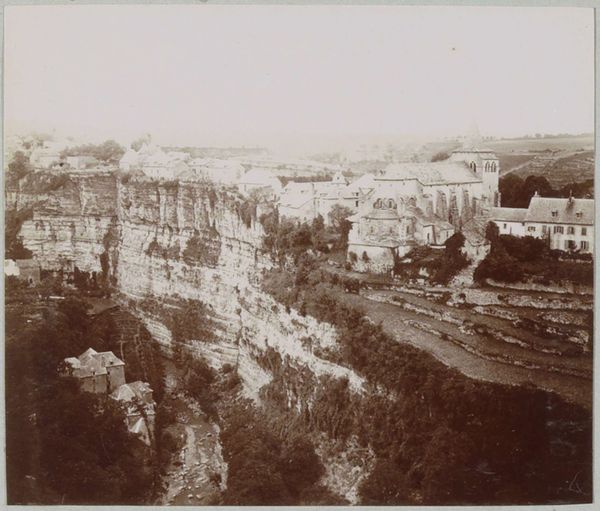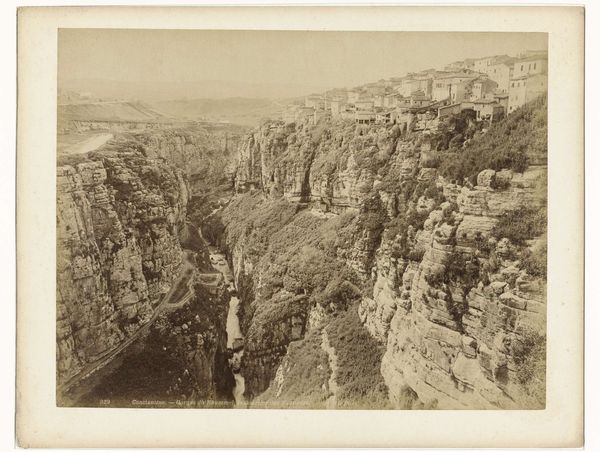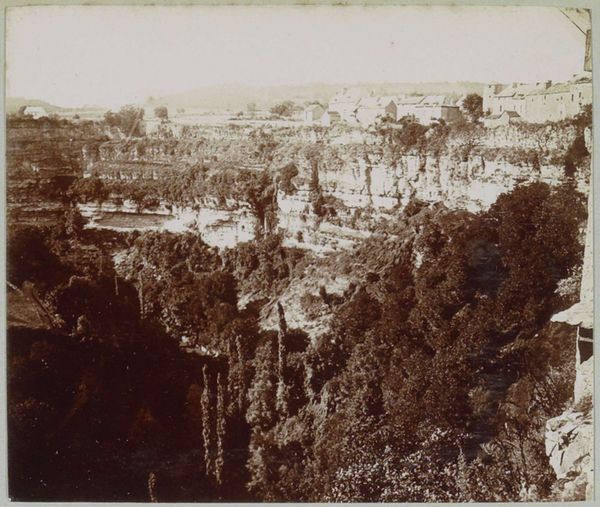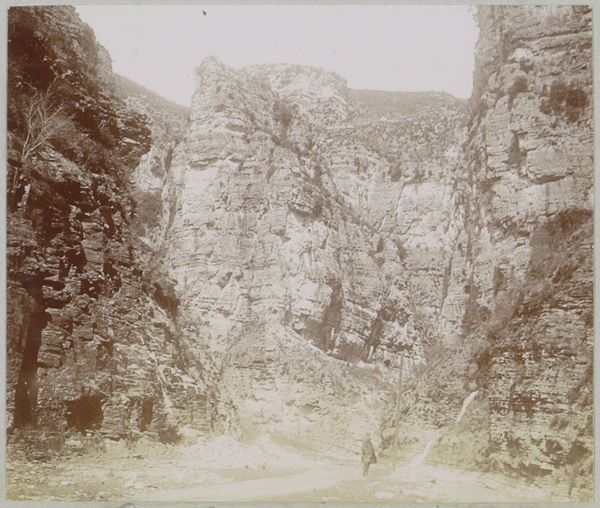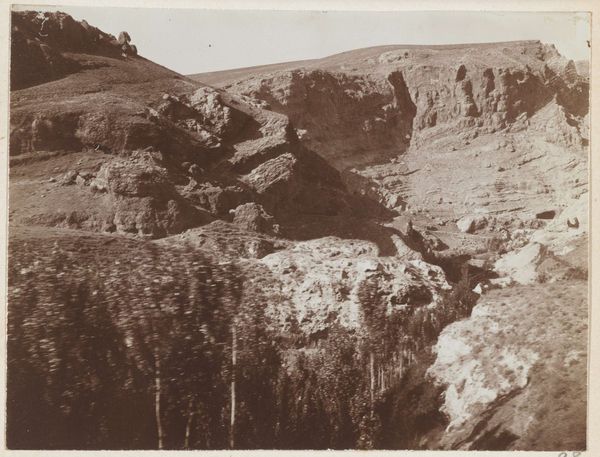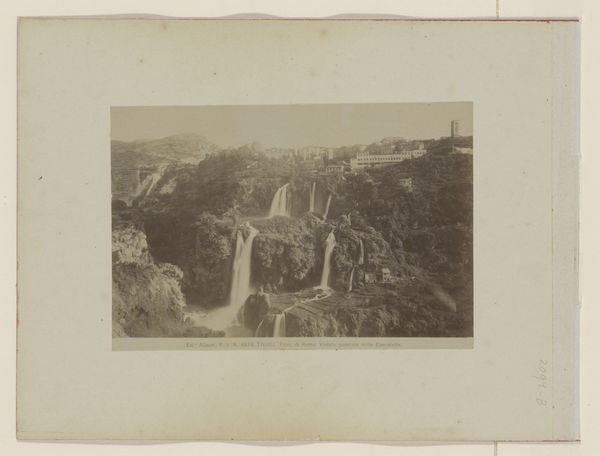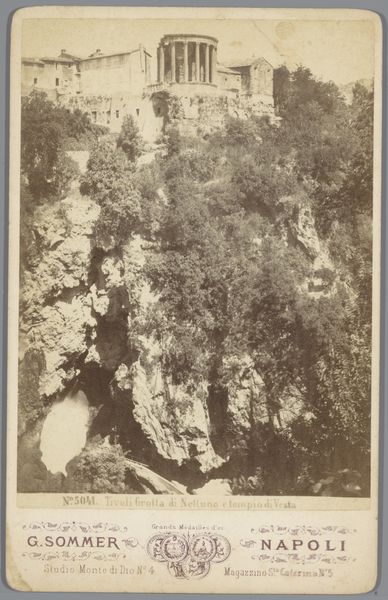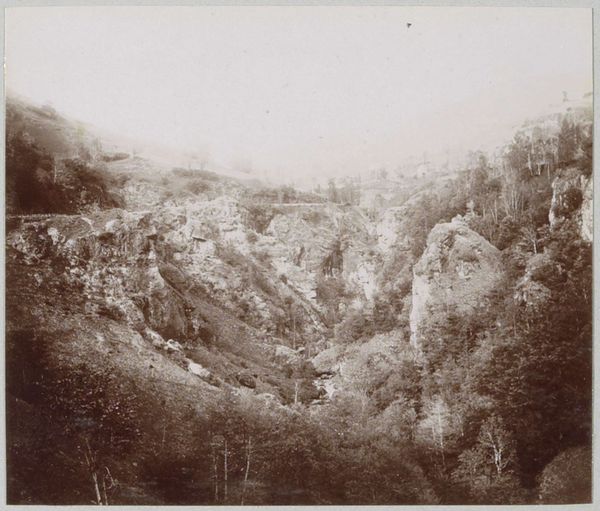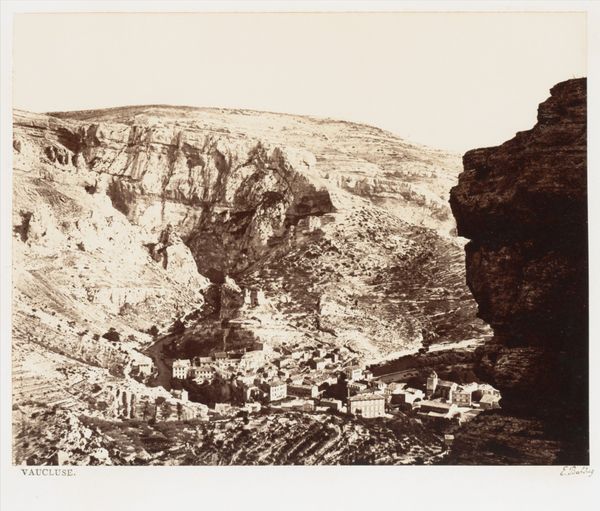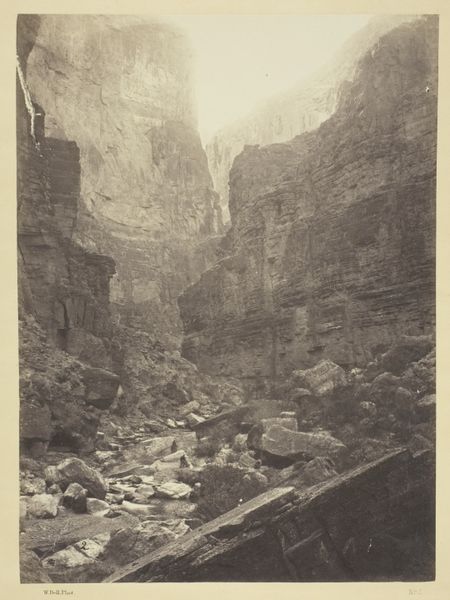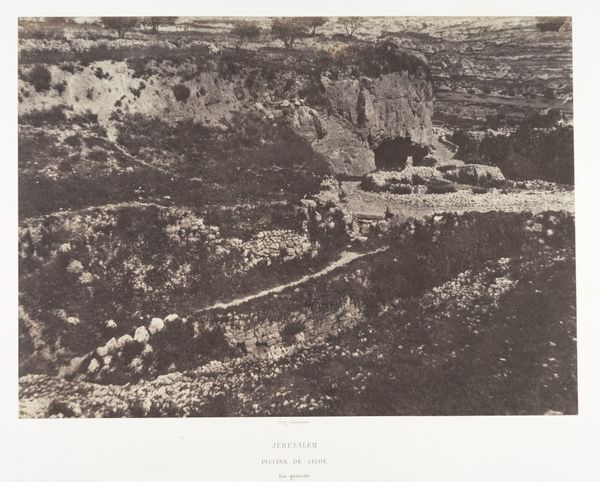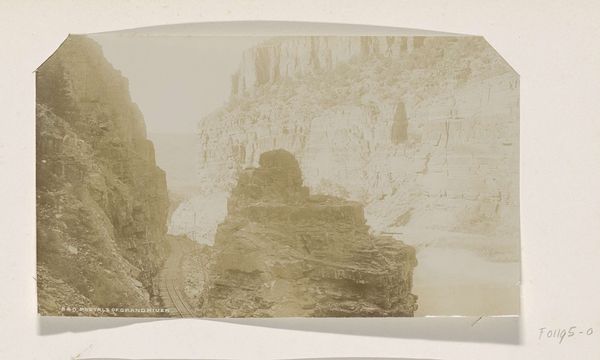
photography, gelatin-silver-print
#
16_19th-century
#
sculpture
#
landscape
#
photography
#
gelatin-silver-print
#
watercolor
#
realism
Dimensions: height 198 mm, width 250 mm
Copyright: Rijks Museum: Open Domain
Curator: Here we have Giorgio Sommer’s photograph, "Gezicht op Latomie del Paradiso te Syracuse, Sicilië," a gelatin-silver print created sometime between 1857 and 1914. What is your immediate reaction to this depiction? Editor: My first impression is one of immense scale, and almost oppressive stillness. The high-contrast monochrome adds to that drama. It’s a landscape, yes, but it feels monumental and almost devoid of human presence. Curator: The Latomie, or ancient quarries, held symbolic weight, often linked to the harsh realities of labor and punishment, so that stillness could also signify centuries of embedded suffering. What symbols or associations come to your mind? Editor: Those sheer rock faces, almost architectural, do give me the sense of imposed order upon the natural world. The sparse vegetation clinging to the stone reads as resilience, yet the whole scene conveys human exploitation of resources and labor, very telling of 19th century industrial values. Curator: Indeed. This image reveals cultural continuity and also prompts psychological contemplation regarding nature, work, and power structures. Giorgio Sommer, through the then-relatively new medium of photography, framed this historic site in ways that highlighted themes of permanence, even inevitability. Editor: I’m also curious about Sommer's framing. Presenting the quarry from this specific vantage point elevates the subject, removing any ground-level view. What does it imply to remove our familiar perspective when experiencing what, ultimately, is an industrial landscape? Curator: Good question! It distances the viewer, perhaps creating a sense of awe or detachment. What could be Sommer's message for public reception? Was he aestheticizing what some might see as evidence of human exploitation? Editor: Exactly. Perhaps his point was less to directly critique, and more to present it as sublime spectacle. It invites us to consider the quarry not only as a site of industry and extraction, but as a statement about humanity's capability of transformation. A challenging legacy to accept! Curator: A poignant encapsulation of contested meanings embedded within the land and art, reflecting continuities between exploitation and aesthetic appreciation that extend even today.
Comments
No comments
Be the first to comment and join the conversation on the ultimate creative platform.
